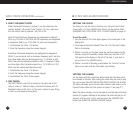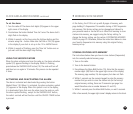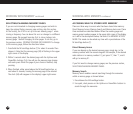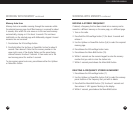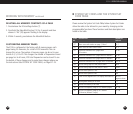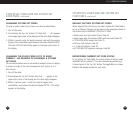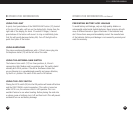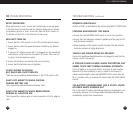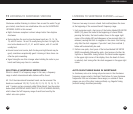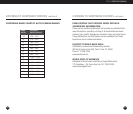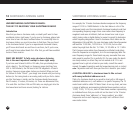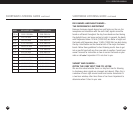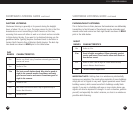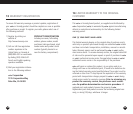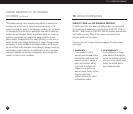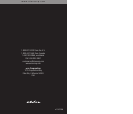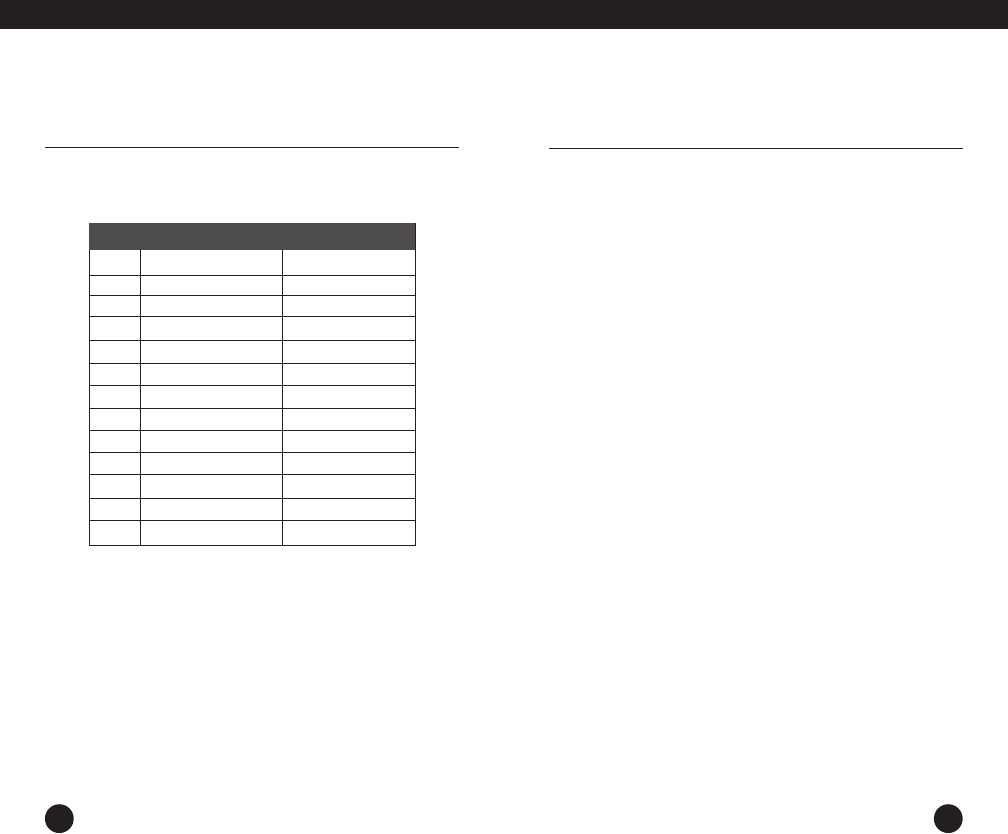
SHORTWAVE LISTENING GUIDE continued
34
BAND MEGAHERTZ (MHz) KILOHERTZ (KHz)
120 m 2.300-2.500 MHz 2300-2500 KHz
90 m 3.20-3.40 MHz 3200-3400 KHz
75 m 3.90-4.00 MHz 3900-4000 KHz
60 m 4.750-5.060 MHz 4750-5060 KHz
49 m 5.950-6.20 MHz 5950-6200 KHz
41 m 7.10-7.60 MHz 7100-7600 KHz
31 m 9.20-9.90 MHz 9500-9900 KHz
25 m 11.600-12.200 MHz 11600-12100 KHz
22 m 13.570-13.870 MHz 13570-13870 KHz
19 m 15.10-15.80 MHz 15100-15800 KHz
16 m 17.480-17.90 MHz 17480-17900 KHz
13 m 21.450-21.850 MHz 21450-21850 KHz
11 m 25.60-26.10 MHz 25600-26100 KHz
SHORTWAVE LISTENING GUIDE continued
35
E100 OPERATION MANUAL
DAY BANDS AND NIGHT BANDS –
THE DIFFERENCE IS IMPORTANT
Because shortwave signals depend on such factors as the sun, the
ionosphere and interaction with the earth itself, signals cannot be
heard on all bands throughout the day. Some bands are best during
the daylight hours, and some are best at night. In general, the bands
with frequencies below 13 MHz (13000 KHz) are better at night and
the bands with frequencies above 13 MHz (13000 KHz) are best during
the day. Listed below are the characteristics of the major shortwave
bands. Follow these guidelines for best listening results. How to get
into a specific band will vary from one radio to another. Consult your
owner’s manual for instruction on how to access the bands on your
radio or call etón Corporation if it’s not clear to you.
SUNSET AND SUNRISE –
OFTEN THE VERY BEST TIME TO LISTEN
We are often asked whether there is a truly best time for listening
to shortwave, when signals are strongest and clearest. Often, this is
a window of hours right around sunset and sunrise. Sometimes it’s
a two-hour window, other times three or four hours. Experiment to
determine when it’s best in your area.



